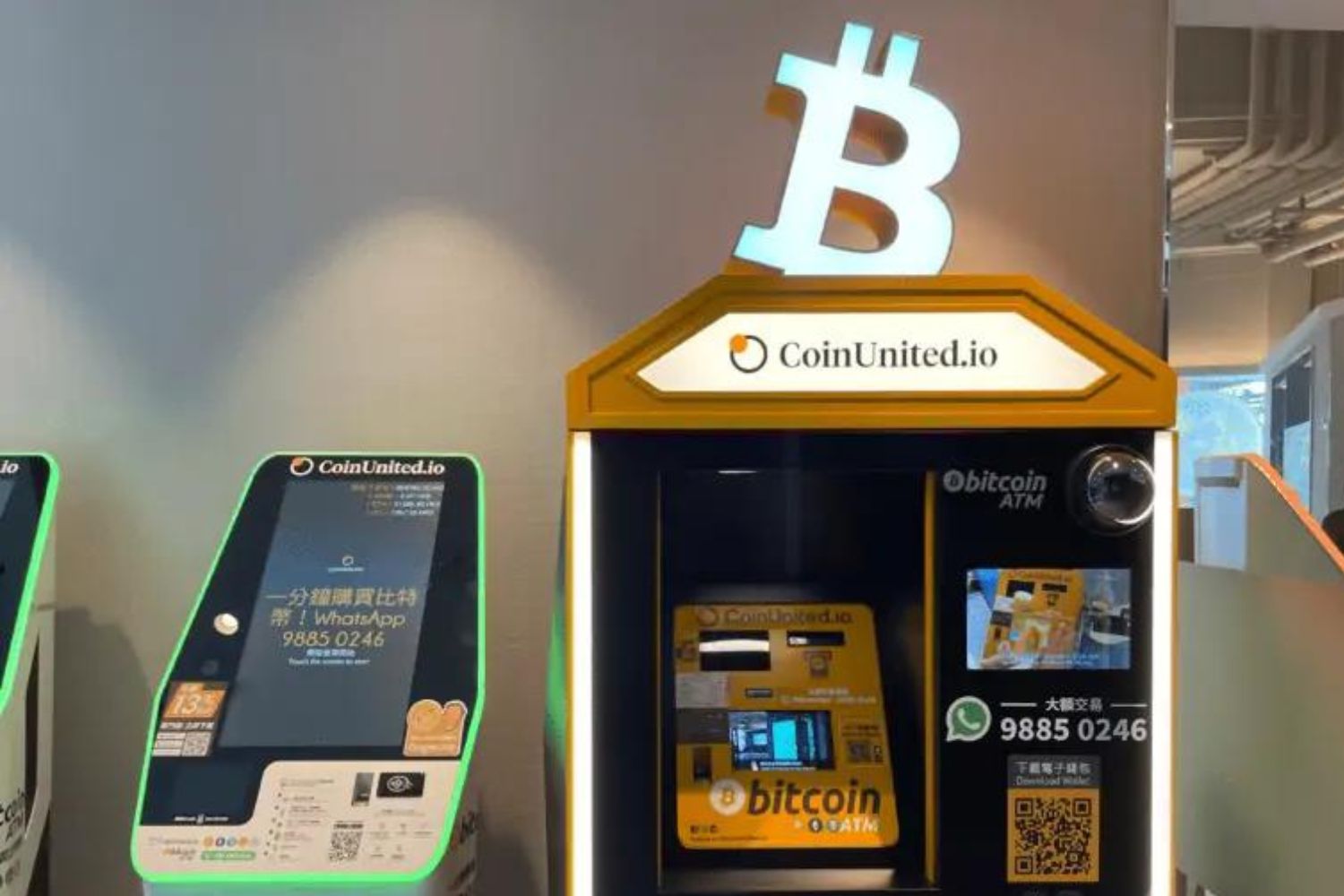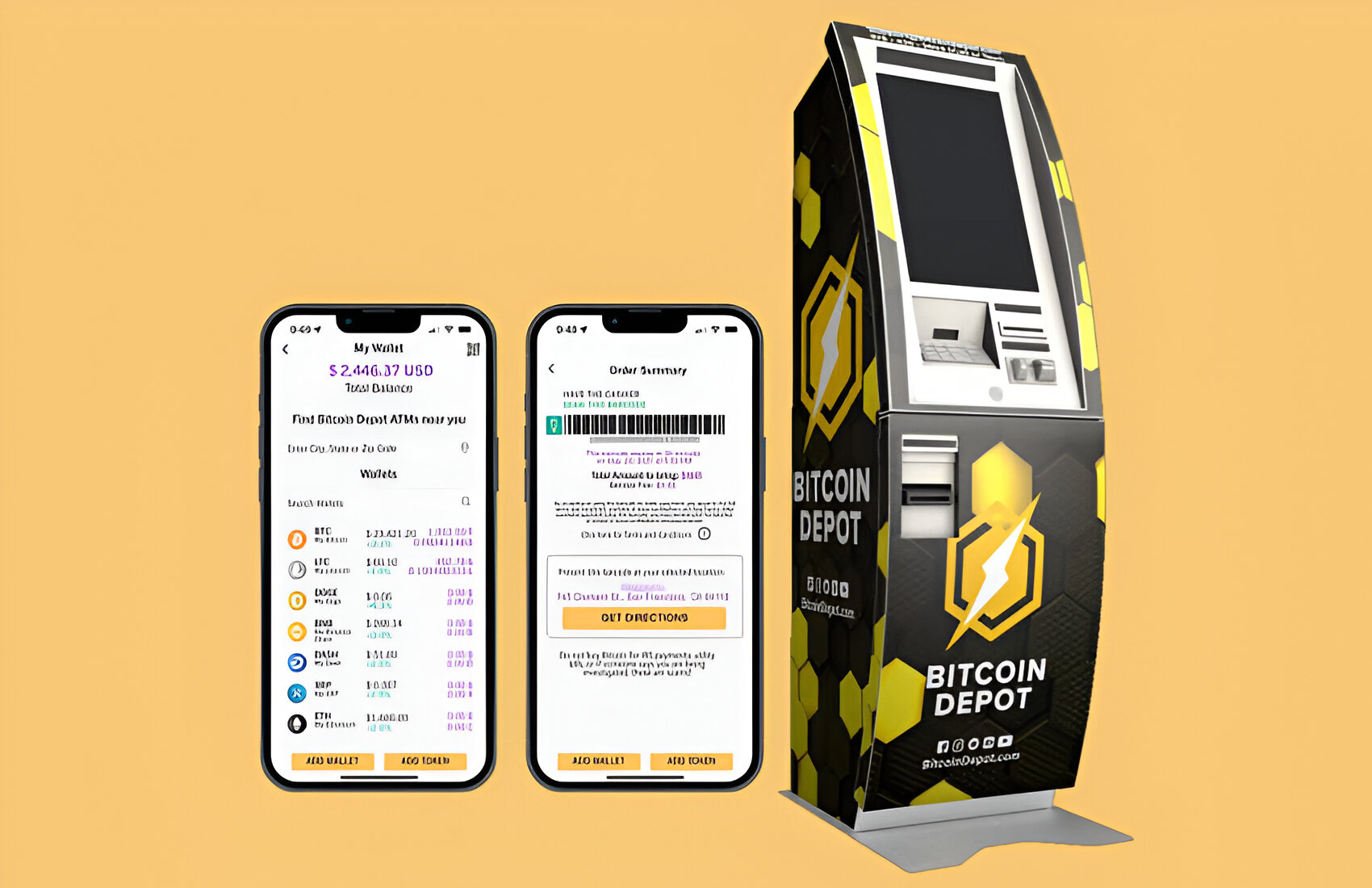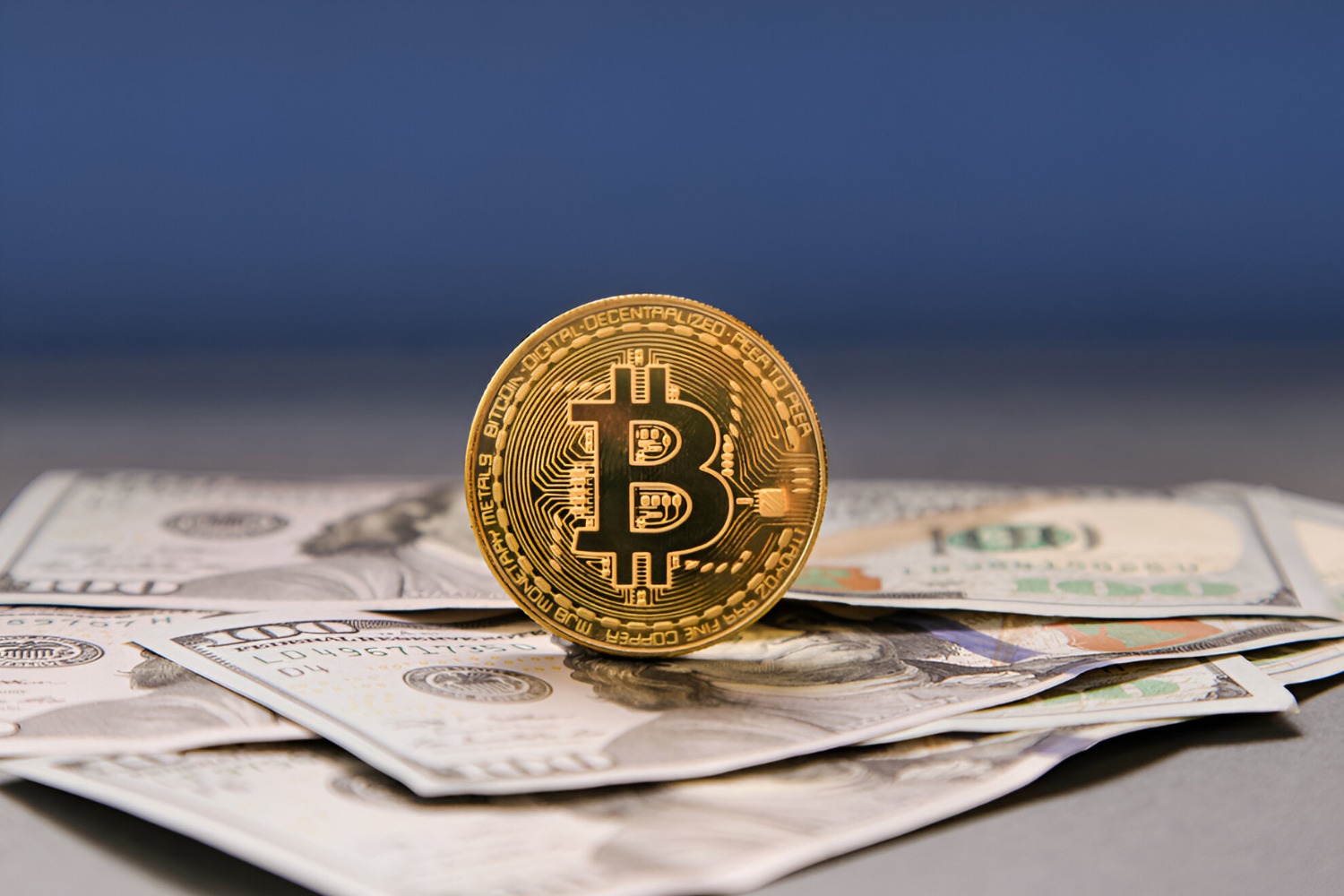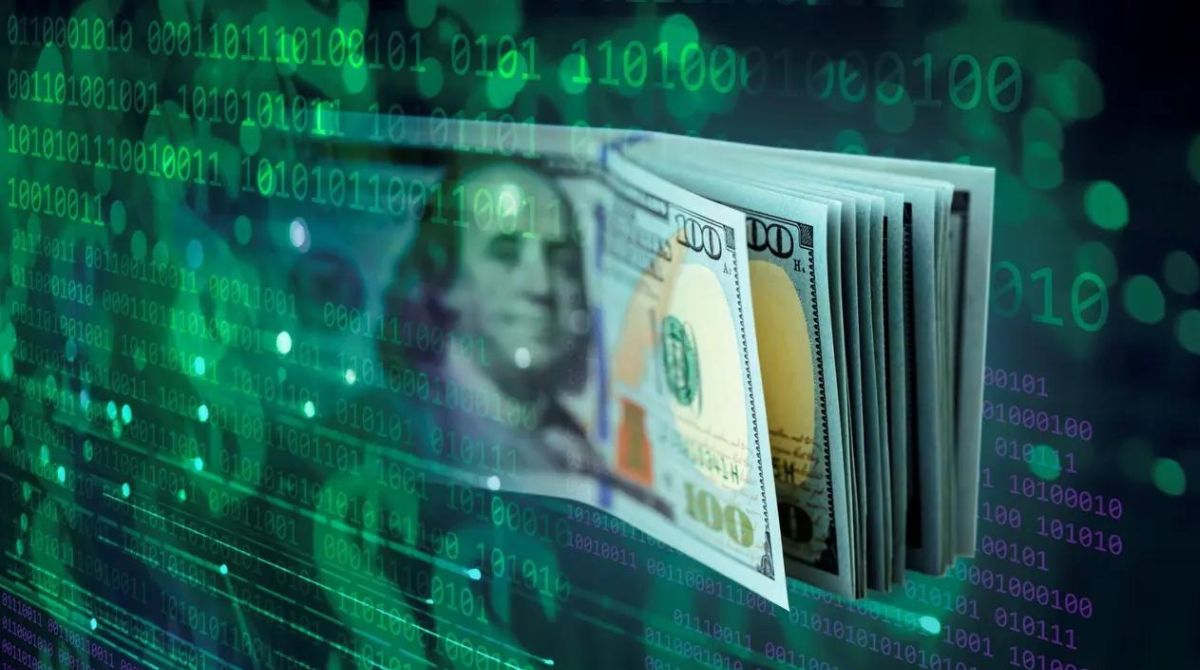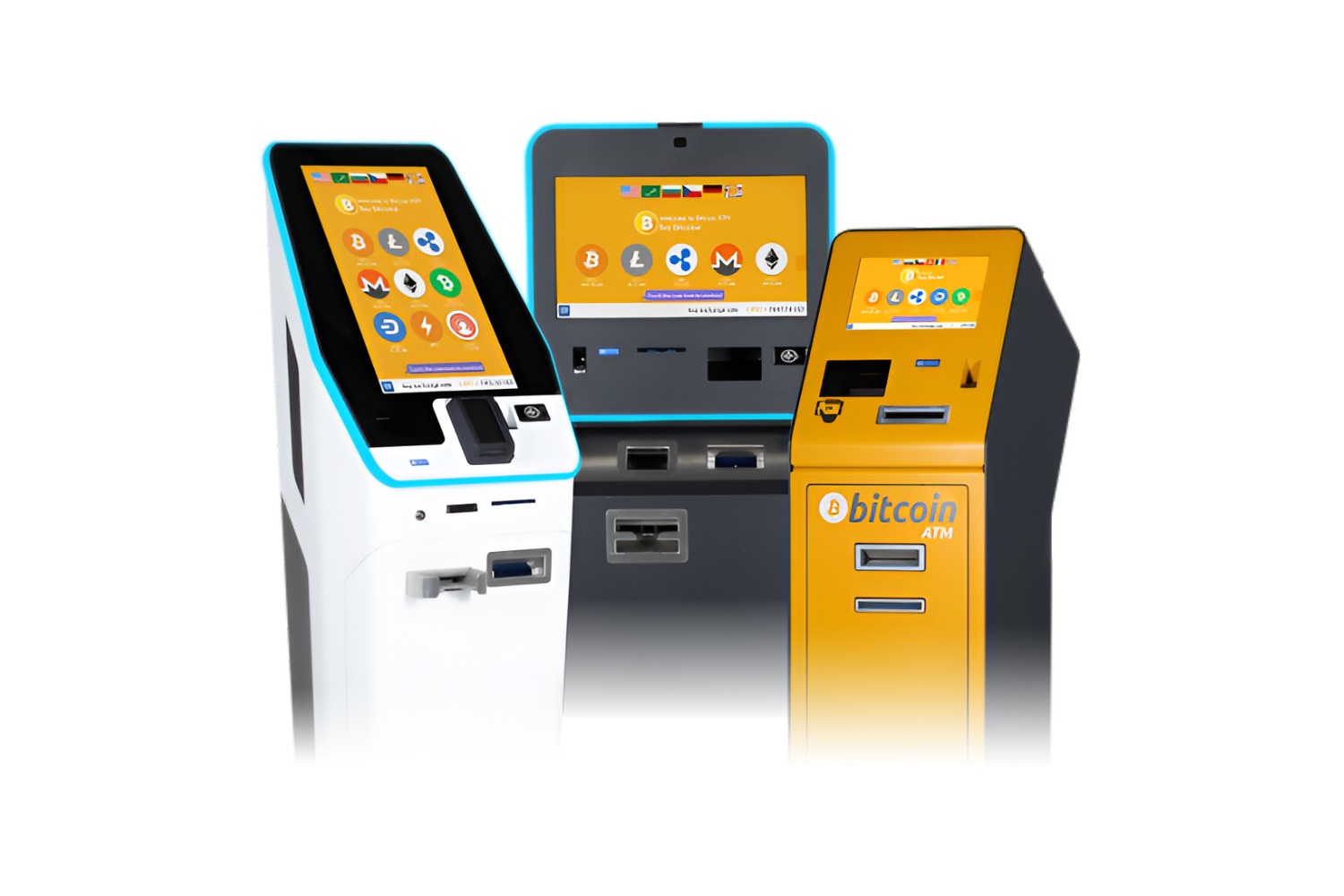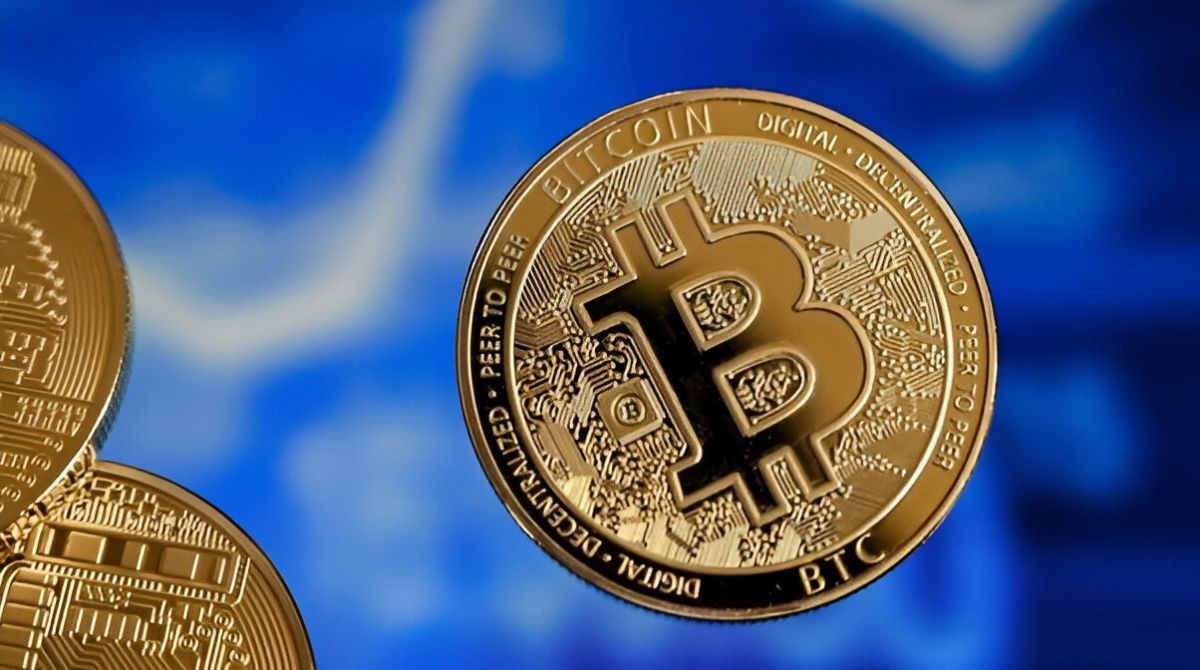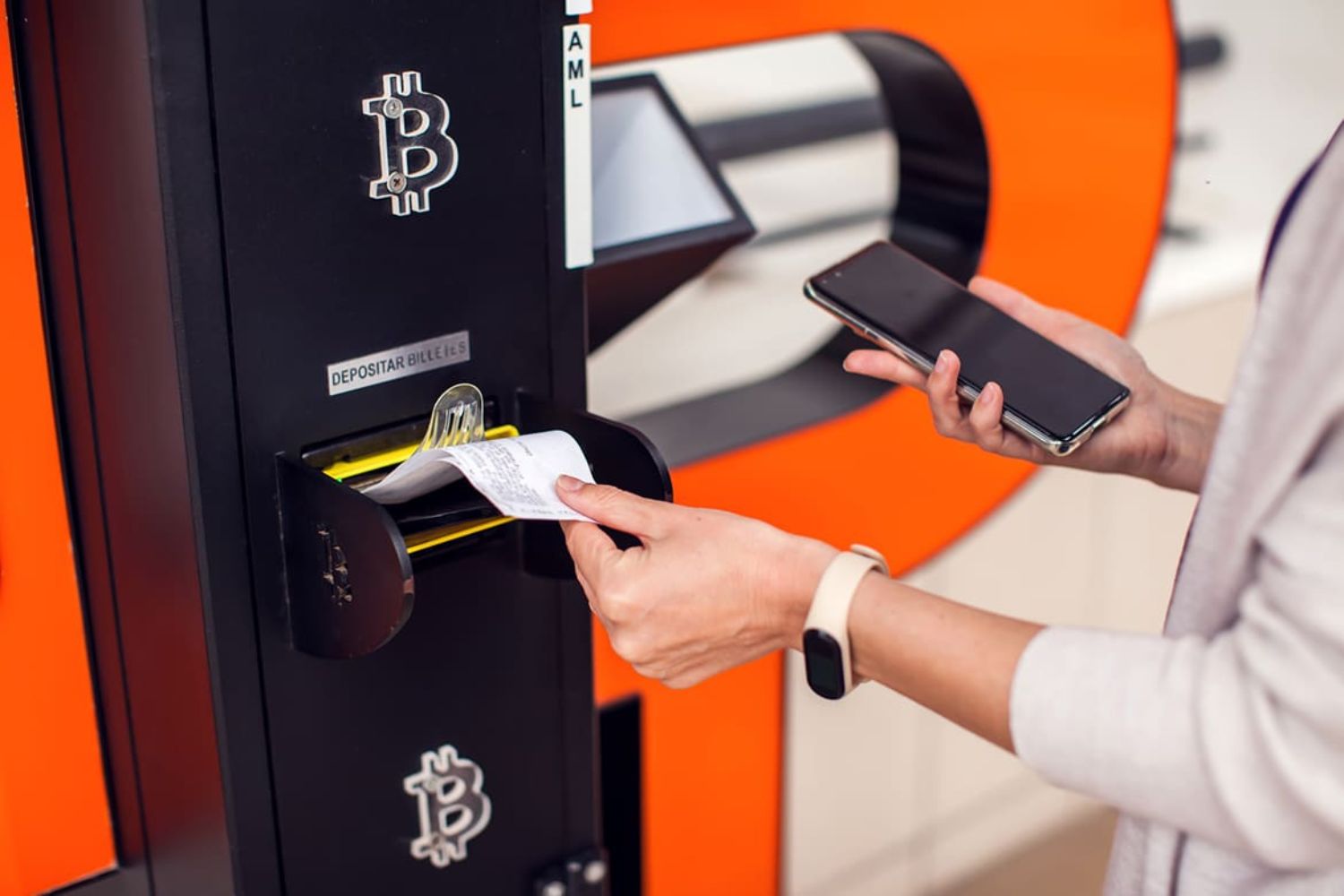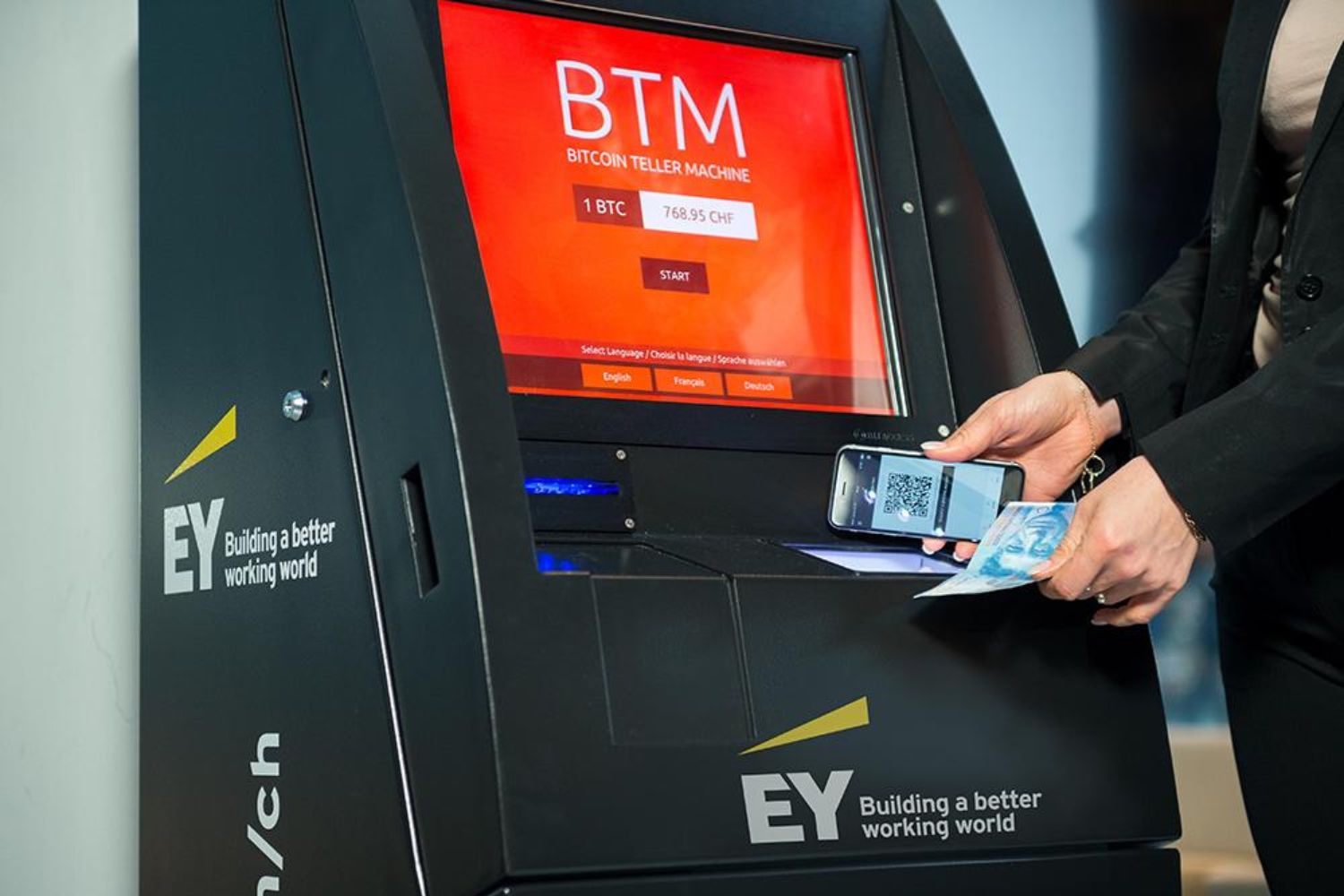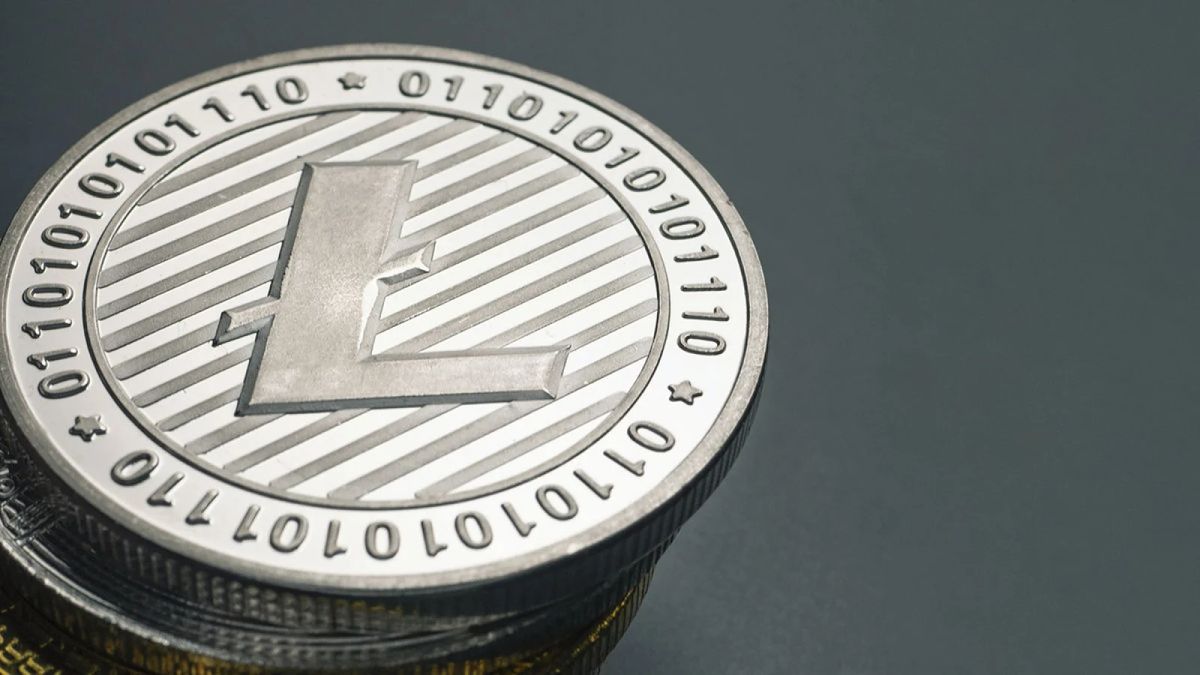Introduction
Welcome to the world of Bitcoin ATMs, where the digital revolution meets the convenience of cash. Bitcoin ATMs are becoming increasingly popular as a means to buy and sell Bitcoin, the world’s most famous cryptocurrency. These innovative machines provide users with a fast and secure way to enter the world of digital currencies without the need for extensive knowledge or online transactions. In this guide, we will walk you through the process of using a Bitcoin ATM, from finding a machine to completing your first transaction.
For those who are new to the concept, Bitcoin ATMs function similarly to traditional ATMs, but instead of dispensing cash, they enable users to buy and sell Bitcoin using cash or a credit/debit card. These machines are designed to bridge the gap between the physical and digital world, making it easier for everyday people to access and interact with cryptocurrencies. Whether you are a seasoned Bitcoin enthusiast or a curious newcomer, using a Bitcoin ATM is a straightforward process that only requires a few simple steps.
Before we dive into the details, it’s essential to note that Bitcoin ATMs are not the same as regular ATMs. They are specialized machines dedicated to cryptocurrency transactions. Therefore, it’s important to understand the specific steps involved to ensure a smooth and successful experience. In this guide, we will break down the process into simple and easy-to-follow steps to help you navigate the Bitcoin ATM world with confidence.
So, if you’re ready to join the cryptocurrency revolution and want to learn how to use a Bitcoin ATM, let’s get started!
Understanding Bitcoin ATMs
Before we dive into the practicalities of using a Bitcoin ATM, let’s take a moment to understand how these machines work. Bitcoin ATMs are physical kiosks or machines that allow users to buy or sell Bitcoin using cash or a credit/debit card. They provide a user-friendly interface for conducting cryptocurrency transactions, making them accessible to individuals who may not be tech-savvy or familiar with online exchanges.
Bitcoin ATMs function similarly to regular ATMs, but with a few key differences. While traditional ATMs are typically owned and operated by banks or financial institutions, Bitcoin ATMs are often owned by independent companies or individuals. These machines connect to the internet and can facilitate transactions on the blockchain, the decentralized ledger that powers Bitcoin and other cryptocurrencies.
When using a Bitcoin ATM, you have the option to either buy or sell Bitcoin. Buying Bitcoin involves depositing cash into the machine and receiving the equivalent amount of Bitcoin in your digital wallet. Selling Bitcoin allows you to exchange your digital currency for cash, which is dispensed by the machine.
It’s important to note that Bitcoin ATMs may not support all cryptocurrencies. The majority of Bitcoin ATMs focus exclusively on Bitcoin transactions, but some machines also support other popular cryptocurrencies like Ethereum or Litecoin. Before using a Bitcoin ATM, make sure to check which cryptocurrencies it supports.
Now that you have a general understanding of Bitcoin ATMs, it’s time to explore the practical aspects of using these machines. In the next section, we will discuss how to find a Bitcoin ATM and the steps you need to follow to complete a transaction.
Finding a Bitcoin ATM
Now that you’re familiar with the basics of Bitcoin ATMs, let’s explore how to find one near you. Thanks to the growing popularity of cryptocurrencies, Bitcoin ATMs can now be found in various locations worldwide, including major cities, shopping centers, and even airports. Here are a few ways to locate a Bitcoin ATM:
- Bitcoin ATM Directories: Online directories, such as CoinATMRadar and Coin ATM Finder, offer comprehensive lists of Bitcoin ATMs worldwide. These directories provide information about the location, operating hours, and supported cryptocurrencies of each ATM. Simply enter your location or browse the map to find a machine near you.
- Bitcoin ATM Apps: Several apps, such as Coin ATM Radar and Bitcoin ATM Map, are designed to help users locate nearby Bitcoin ATMs. These apps utilize your smartphone’s GPS to display a map of nearby machines, making it convenient to find one on the go. Some apps even provide additional features, such as user reviews and real-time availability of cash or Bitcoin.
- Bitcoin ATM Operators’ Websites: If you’re aware of specific Bitcoin ATM operators in your area, visiting their websites can provide you with up-to-date information about the location and availability of their machines. Operators often have dedicated maps or location finders on their websites to assist users in locating their ATMs.
Once you’ve identified a Bitcoin ATM near you, it’s essential to check its operating hours and ensure it is currently operational. Some Bitcoin ATMs may have restricted hours or occasional maintenance updates, so verifying these details beforehand can save you time and frustration.
Now that you’ve found a Bitcoin ATM nearby, it’s time to learn how to use it. In the following sections, we will walk you through the step-by-step process of using a Bitcoin ATM, from creating a wallet to completing your transaction.
Step 1: Creating a Wallet
Before you can start using a Bitcoin ATM, you’ll need a digital wallet to store your Bitcoin. A digital wallet is essentially a software application that allows you to securely store, send, and receive cryptocurrencies. There are various types of wallets available, including online wallets, hardware wallets, and mobile wallets. Here’s how to create a wallet:
- Choose a Wallet Type: Evaluate the different wallet options and choose one that aligns with your needs and preferences. Online wallets are convenient and accessible from any device with an internet connection, but they may be more susceptible to hacking risks. Hardware wallets, on the other hand, offer enhanced security by storing your private keys offline on a physical device.
- Download or Register: Depending on the type of wallet you choose, you may need to download software or register for an online wallet service. Follow the instructions provided by the wallet provider to complete the setup process.
- Create a Strong Password: When creating your wallet, make sure to choose a strong, unique password. This will help protect your funds from unauthorized access.
- Backup Your Wallet: After creating your wallet, it’s crucial to backup your wallet’s recovery phrase or private key. This backup allows you to restore access to your funds in case you forget your password or lose your device.
Once your digital wallet is set up and secured, you are ready to move on to the next step: verifying your identity.
Note: Some Bitcoin ATMs allow you to generate a new wallet on the spot. In such cases, you may skip this step and proceed directly to Step 2.
Step 2: Verifying Your Identity
Before conducting a transaction at a Bitcoin ATM, you may need to verify your identity. Identity verification is a standard procedure followed by most Bitcoin ATMs to comply with Know Your Customer (KYC) and anti-money laundering (AML) regulations. Here’s what you need to know about verifying your identity:
- Types of Identification: Bitcoin ATMs typically accept various forms of identification, including government-issued IDs such as passports, driver’s licenses, or national identification cards. Some machines may require additional documents like proof of address.
- Follow the On-Screen Instructions: When you approach a Bitcoin ATM, the screen will guide you through the verification process. It will prompt you to select the type of identification you will be using and provide instructions on how to scan or enter your ID information.
- Face Verification: Some Bitcoin ATMs may also require face verification. The machine will ask you to position your face within the camera’s frame and may request you to remove any glasses or accessories for proper identification.
- Comply with Limits and Regulations: Depending on the jurisdiction and the specific Bitcoin ATM, there may be transaction limits and regulations in place. These limits are typically set to align with local laws and regulations and are meant to prevent money laundering and other illicit activities.
- Completion and Approval: Once you have successfully submitted your identification documents and completed the verification process, the Bitcoin ATM will review your information. If your identity is confirmed, you will be allowed to proceed with the transaction. In case there are issues with the verification, the ATM may prompt you to contact customer support or try an alternative verification method.
Identity verification adds an extra layer of security to your Bitcoin transactions and helps regulators in ensuring a safe environment for users. It is important to note that the verification process may vary slightly depending on the Bitcoin ATM operator and local regulations. Familiarize yourself with the specific requirements of the machine you are using to avoid any delays or complications.
With your identity verified and the necessary compliance steps completed, you are now ready to move on to Step 3: choosing your transaction type.
Step 3: Choosing Your Transaction Type
Once you have successfully verified your identity at the Bitcoin ATM, it’s time to choose the transaction type that suits your needs. Bitcoin ATMs typically offer two main transaction options: buying Bitcoin or selling Bitcoin. Here’s what you need to know about each option:
- Buying Bitcoin: If you’re looking to acquire Bitcoin, select the “Buy Bitcoin” option on the ATM screen. You will be prompted to enter the amount of Bitcoin you wish to purchase. Some Bitcoin ATMs allow you to enter the amount in fiat currency (such as USD or EUR), while others require you to enter the Bitcoin amount directly. Once you’ve entered the desired amount, the ATM will display the equivalent amount in fiat currency or Bitcoin.
- Selling Bitcoin: If you already own Bitcoin and want to exchange it for cash, select the “Sell Bitcoin” option on the ATM screen. You will be prompted to enter the amount of Bitcoin you want to sell. Again, some Bitcoin ATMs may allow you to enter the amount in fiat currency, while others require the Bitcoin amount. The ATM will display the equivalent amount in fiat currency or Bitcoin.
It’s important to note that the availability of the buying and selling options may vary depending on the Bitcoin ATM and the regulations of the specific location. Some machines may only offer the buying option, while others may allow both buying and selling. Additionally, not all Bitcoin ATMs support the same cryptocurrencies. Therefore, it’s advisable to check the supported cryptocurrencies before proceeding.
After selecting your preferred transaction type, the Bitcoin ATM will display the current exchange rate and any applicable fees. Take a moment to review these details to ensure you are comfortable with the rate and fees being applied. Keep in mind that Bitcoin prices can fluctuate, so the rate displayed on the ATM may vary slightly from the market rate.
Now that you’ve chosen your transaction type and reviewed the rate and fees, it’s time to move on to the next step: inserting cash or a credit/debit card into the Bitcoin ATM. This step will be covered in detail in the following section.
Step 4: Inserting Cash or Credit/Debit Card
After selecting your desired transaction type at the Bitcoin ATM, it’s time to proceed with the payment method. Depending on the machine and the transaction type you selected, you will either need to insert cash or use a credit/debit card. Here’s what you need to know about each option:
- Inserting Cash:
- If you’re buying Bitcoin, you will need to insert the specified amount of cash into the Bitcoin ATM. The screen will display the denominations accepted by the ATM and provide instructions on how to insert the cash.
- One important thing to note is that Bitcoin ATMs typically require exact or near-exact amounts in cash. Therefore, it’s advisable to have the exact amount ready or be prepared to receive any change due in Bitcoin or another form.
- Follow the on-screen instructions to insert the cash into the designated slot. The machine may have different slots or mechanisms for accepting cash, so make sure to insert the notes as directed.
- Using a Credit/Debit Card:
- If the Bitcoin ATM supports credit/debit card transactions, you will need to insert your card into the card reader. The machine will prompt you to insert the card with the correct orientation and may require you to follow additional security measures, such as entering a PIN or providing a signature.
- Ensure that your credit/debit card is enabled for international transactions, as some Bitcoin ATMs may require international payment processing capabilities.
- Follow the on-screen instructions to complete the card transaction. The machine will connect to the payment network and process your payment securely. It’s important to note that the transaction may be subject to additional card processing fees.
Once you’ve inserted the cash or completed the credit/debit card transaction, the Bitcoin ATM will proceed to the next step, which involves confirming your transaction details. This step ensures that you have entered the correct information and allows you to review the transaction before finalizing it.
In the next section, we will outline the process of confirming your transaction and provide guidance on completing the transaction successfully.
Step 5: Confirming Your Transaction
After inserting cash or completing the credit/debit card transaction at the Bitcoin ATM, it’s time to confirm the details of your transaction. This step allows you to review and verify the information before finalizing the transaction. Here’s what you need to do:
- Review Transaction Details: The Bitcoin ATM will display a summary of your transaction on the screen. Take a moment to carefully review the details, including the amount of Bitcoin you’re buying or selling, the current exchange rate, any applicable fees, and the final total.
- Double-Check the Wallet Address: If you’re buying Bitcoin or selling it for cash, the ATM will ask you to provide your wallet address or QR code. Ensure that the address is correct and matches the wallet you want to use for the transaction. Mistakenly entering the wrong wallet address can result in irreversible loss of funds.
- Confirm the Transaction: Once you’re satisfied with the transaction details and have verified the wallet address, instruct the Bitcoin ATM to proceed with the transaction. This is typically done by pressing a “Confirm” or “Accept” button on the screen.
- Wait for Confirmation: Depending on the Bitcoin ATM and the network congestion, the transaction confirmation may take a few minutes. The machine will monitor the blockchain to ensure that the transaction is successfully processed.
- Obtain a Receipt (Optional): Bitcoin ATMs may provide an option to print a receipt for your transaction. If you wish to have a physical record of your transaction, select the option to print a receipt. Keep the receipt in a safe place for future reference.
Once the Bitcoin ATM confirms the transaction, you have successfully completed your transaction at the machine. If you were buying Bitcoin, it will be transferred to your designated wallet address. If you were selling Bitcoin, the ATM will dispense the corresponding cash amount.
It’s important to note that transaction times and fees may vary depending on network congestion and the specific Bitcoin ATM. Be prepared for some variations in the transaction process and consult the ATM’s screen for any additional information or instructions during this step.
In the next section, we will discuss the process of receiving your Bitcoin or printing a paper wallet, depending on your preference and the options available at the Bitcoin ATM.
Step 6: Receiving Your Bitcoin
After completing your transaction at the Bitcoin ATM, it’s time to receive your Bitcoin. The process may vary depending on the Bitcoin ATM and your preferred method of receiving the digital currency. Here’s what you need to know:
- Direct Transfer to Your Wallet: If you provided a wallet address or scanned a QR code during the transaction process, the Bitcoin ATM will transfer the purchased Bitcoin directly to your designated wallet. The transaction may take a few minutes to be confirmed on the blockchain, so be patient while the transfer is completed.
- Activation Code: Some Bitcoin ATMs provide an activation code instead of transferring the Bitcoin directly to your wallet. In this case, the ATM will display a unique code on the screen, which you can use to activate and access your Bitcoin through an online platform or wallet service. Follow the instructions provided by the ATM to redeem your Bitcoin using the activation code.
- Mobile Wallet: If you have a mobile wallet installed on your smartphone, the Bitcoin ATM may provide an option to scan a QR code displayed on the screen. By scanning the QR code using your mobile wallet’s scanning function, you can receive the purchased Bitcoin directly to your mobile wallet.
- Paper Wallet (Optional): Some Bitcoin ATMs offer the option to print a paper wallet, which is a physical representation of your Bitcoin wallet’s public and private keys. A paper wallet can be used to store your Bitcoin offline and provides an extra layer of security. If you choose this option, the machine will print a sheet of paper containing the necessary information to access and manage your Bitcoin.
Once you have received your Bitcoin in your preferred method, it is advisable to double-check your wallet balance and ensure that the transferred amount matches the purchased Bitcoin. If there are any discrepancies or issues, reach out to customer support or refer to the Bitcoin ATM’s contact information for assistance.
With your Bitcoin safely received in your wallet, you have completed the main objective of using a Bitcoin ATM. However, there is an optional step that you may consider: printing a paper wallet as an additional backup of your private keys. This step will be covered in the next section.
Step 7: Printing a Paper Wallet (Optional)
After completing your transaction and receiving your Bitcoin at the Bitcoin ATM, you have the option to print a paper wallet as an additional backup of your private keys. A paper wallet is a physical document that contains your Bitcoin wallet’s public and private keys, which are needed to access and manage your Bitcoin holdings. Here’s what you need to know about printing a paper wallet:
- Select the Paper Wallet Option: If the Bitcoin ATM offers the option to print a paper wallet, you can choose this option from the on-screen menu. Some ATMs may label it as “Print Wallet” or a similar phrase.
- Follow the Printing Instructions: The Bitcoin ATM will provide instructions on how to print the paper wallet. Ensure that you have enough paper and ink in the printer before proceeding.
- Protect the Paper Wallet: Once the paper wallet is printed, it’s important to keep it safe and secure. Treat it as you would treat cash or any important document. Store it in a secure location, such as a safe or a lockbox.
- Do Not Share or Lose the Paper Wallet: Remember to keep your paper wallet private and avoid sharing it with anyone. Losing the paper wallet can result in permanent loss of access to your Bitcoin, so it’s crucial to keep it secure and in your possession at all times.
- Use the Paper Wallet Sparingly: It’s generally recommended to use the paper wallet as a backup or a long-term storage solution for your Bitcoin. Importing the private keys from the paper wallet into a digital wallet can expose the keys to potential digital threats. Use digital wallets for regular transactions and rely on the paper wallet as a secure backup option.
Printing a paper wallet provides an additional layer of security for your Bitcoin holdings, as it keeps your private keys offline and away from potential digital attacks. However, it is important to note that paper wallets have their own risks and vulnerabilities. Make sure to research and follow best practices for securely storing and using a paper wallet.
With your Bitcoin transaction completed and a paper wallet as an optional backup, you’ve successfully completed the main steps of using a Bitcoin ATM. In the final section, we will provide some troubleshooting tips to help you navigate any potential issues you may encounter during the process.
Step 8: Troubleshooting Tips
Using a Bitcoin ATM is usually a straightforward process, but like any technology, there can be occasional hiccups or issues that you might encounter. Here are some troubleshooting tips to help you navigate any potential problems during your Bitcoin ATM experience:
- Verify ATM Status: Before using a Bitcoin ATM, double-check the operating status. Some ATMs might be temporarily offline for maintenance or experiencing technical difficulties. You can check the ATM’s status through the Bitcoin ATM operator’s website or by contacting their customer support.
- Ensure Sufficient Funds: If you’re buying Bitcoin using a Bitcoin ATM, make sure you have enough cash or available balance on your credit/debit card to complete the transaction. Insufficient funds could result in a failed transaction.
- Check Network Connectivity: Ensure that the Bitcoin ATM has a stable internet connection. Poor connectivity or network disruptions can cause transaction delays or failures. If possible, choose a Bitcoin ATM with a reliable and strong internet connection.
- Review Transaction Details: Take the time to carefully review the transaction details before confirming. Verify the amount of Bitcoin, the exchange rate, fees, and the wallet address. Mistakes in any of these details could result in loss of funds or failed transactions.
- Customer Support: If you encounter any issues or have questions during the transaction process, don’t hesitate to reach out to the Bitcoin ATM operator’s customer support. They can provide guidance, troubleshoot problems, and assist you in resolving any concerns.
- Keep Your Wallet Secure: Always prioritize the security of your Bitcoin wallet. Ensure that you have a strong password, keep your private keys safe, and regularly update your wallet software. Additionally, be cautious of anyone attempting to look over your shoulder or steal your information while using a Bitcoin ATM.
- Keep Transaction Records: It’s a good practice to keep a record of your Bitcoin transactions. Save receipts, take screenshots, or make notes to track your purchases or sales. These records can be helpful for tax purposes, auditing, or to resolve any disputes that may arise.
- Stay Informed: Stay updated with the latest developments and news in the world of cryptocurrencies. Being knowledgeable about changes in regulations, security practices, and emerging trends will help you make informed decisions and stay ahead of potential risks.
By following these troubleshooting tips, you can minimize potential issues and have a smoother experience when using a Bitcoin ATM. Remember, if you encounter any difficulties or have questions, don’t hesitate to reach out to customer support for assistance. With practice and familiarity, using a Bitcoin ATM will become second nature.
Now that you have a comprehensive understanding of using a Bitcoin ATM and troubleshooting common issues, you are well-equipped to confidently embark on your cryptocurrency journey.
Conclusion
Using a Bitcoin ATM can be an exciting and convenient way to buy or sell Bitcoin, providing easy access to the world of cryptocurrencies. Throughout this guide, we have covered the step-by-step process of using a Bitcoin ATM, from finding a machine to completing your first transaction. Here’s a recap of the key points:
First, we discussed the basics of Bitcoin ATMs and how they function as specialized physical machines for cryptocurrency transactions. We then explored different methods to find a Bitcoin ATM near you, including online directories, ATM-specific apps, and operator websites.
We then delved into the essential steps of using a Bitcoin ATM. Starting with creating a digital wallet, we highlighted the importance of choosing the right wallet type, securing it with a strong password, and backing up the wallet’s recovery phrase or private key. Next, we discussed the verification process required by most Bitcoin ATMs to comply with KYC and AML regulations.
Choosing a transaction type, whether buying or selling Bitcoin, was covered in detail, highlighting important considerations such as transaction limits and available cryptocurrencies. We then moved on to inserting cash or using a credit/debit card to complete the transaction, emphasizing the need to carefully review the transaction details and follow the machine’s instructions.
Confirming the transaction details, receiving your Bitcoin, and the optional step of printing a paper wallet were discussed to ensure a smooth and secure experience. We wrapped up by providing troubleshooting tips to help you navigate any potential issues that may arise during the Bitcoin ATM process.
With this comprehensive guide, you have gained the knowledge and understanding necessary to confidently use a Bitcoin ATM. As with any new endeavor, it’s essential to stay informed, be mindful of security practices, and keep track of your transactions.
Remember, the world of cryptocurrencies is constantly evolving, and new technologies and opportunities are emerging. Stay curious, explore further, and embrace the exciting possibilities that Bitcoin and other cryptocurrencies offer.







